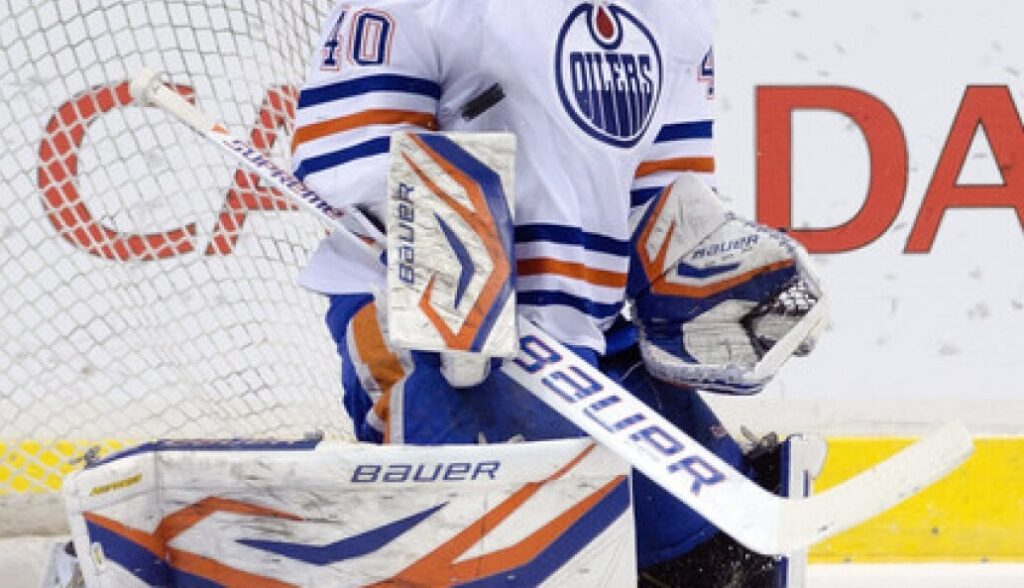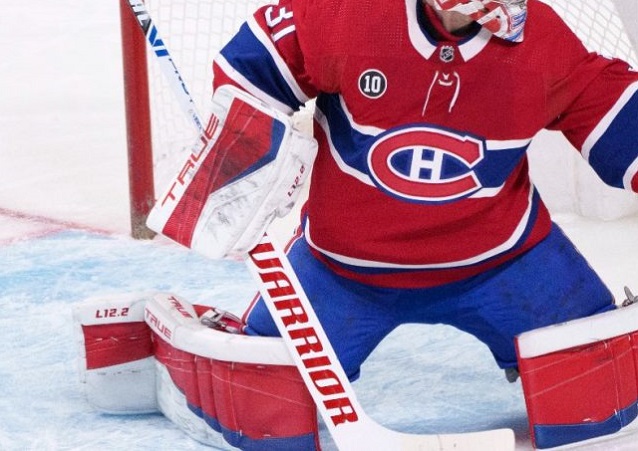Defend Your Net Like a Pro: How to Pick the Right Goalie Stick
As the last line of defence, the goalie is the backbone of any successful hockey team. Beyond carrying the heavy responsibility of stopping pucks and saving goals against, goalies are responsible for reading the game, communicating with teammates and making split-second decisions. Such a high-pressure and high-stakes role requires perfectly-suited equipment, including a goalie stick, to help them maintain balance, mobility and coverage on the net.
Choosing the right goalie stick is critical for both performance and protection. The right size can help you maintain the correct stance and move more efficiently across the net, boosting your confidence. Further, the right material and blade curve can help you enhance puck control.
Are Goalie Hockey Sticks Different?

Yes, goalie sticks are different from regular hockey sticks, and there’s a good reason for that. While both options are similar in terms of basic structure, they’re designed for entirely different purposes on the ice. Featuring a wider paddle and blade for greater surface area coverage, performance hockey goalie sticks are built to block shots and control rebounds. Conversely, player sticks have a slimmer profile and a more flexible shaft so they can generate quick release and power. This design is optimized for stickhandling, passing, and shooting.
Another significant difference is in the construction and materials. Goalie sticks tend to be stiffer and heavier, especially in the paddle area, so they can withstand repeated impact from high-speed shots. They also have a straighter shaft and different flex characteristics, helping goalies make powerful poke checks and clearances without compromising their balance or control.
Some modern varieties use composite materials to reduce weight and dampen vibrations while offering durability in high-impact zones. These design differences aren’t just about preference—they’re essential for performance. Using a player stick as a goalie wouldn’t provide enough coverage or control, and using a goalie stick as a skater would hinder speed and puck handling. Each is carefully engineered to support the specific role it plays on the ice.
How Do You Pick a Goalie Stick?
Size, material, patterns, blade curve, lie and flex are some of the most important factors to consider when choosing a goalie stick. All these affect your performance differently, so ensure you understand them well, regardless of whether you’re shopping for yourself or your child.
Size
When exploring the range of hockey goalie sticks, you’ll notice they come in four different size categories, from 14″ to 36″ and anywhere in between:
- Youth
- Junior
- Intermediate
- Senior
Choosing the size of a stick is one of the simplest steps when choosing a goalkeeper’s equipment. You can use both age and height as determination factors, although height is by far the most significant. Age becomes a factor when considering the stick’s weight. Younger goalies can use some of the lightest sticks available, but it makes more sense to purchase a stick appropriate for their age group.
Goalie Stick Sizing Guide
| Size of Goalie Stick | Paddle Length | Goalie Height | Goalie Age |
| Youth | 18″ | 3.5′ | 2 – 6 years |
| Youth | 19″ | 3.5′ to 3’8″ | 2 – 6 years |
| Youth | 20″ | Up to 4’2″ | 2 – 6 years |
| Junior | 21″ | 4′ to 4’4″ | 7 – 8 years |
| Junior | 22″ | 4’4″ to 4’6″ | 7 – 8 years |
| Junior | 23″ | 4’6″ to 4’9″ | 7 – 8 years |
| Intermediate | 23″–23.5″ | 4’6″ to 5’3″ | 9 – 14 years |
| Intermediate | 24″–24.5″ | 5’3″ to 5’4″ | 9 – 14 years |
| Senior | 24″ | Under 5’10″ | 14+ years |
| Senior | 24.5″ | 5’10″ to 6′+ | 14+ years |
| Senior | 25″+ | 6’2″ and up | 14+ years |
By the time they reach high school, most goalies will have advanced to a senior-level goaltender stick. However, since intermediate goalie sticks are lighter than senior sticks and are typically less expensive than senior, going with an intermediate might not be your worst option.
Patterns
A stick’s blade curve and lie are known as its “pattern.” Stick pattern is more critical than ever because goalies are expected to play the puck these days. Recognize your strengths and buy a stick with the lie and curve that work best for you.
Blade Curve
The starting point of the stick blade curve and the position of the blade face from heel to toe determine the curve’s shape. A mid-curve stick is a good starting point for novice goalies who can modify their stick preference as their game and talents improve. Understanding how these elements impact the stick’s performance can help you choose correctly.
Goalie Stick Blade Curves Explained
| Curve Type | Where the Curve Begins | Best For | Notes |
| Mid Curve | Middle of the blade | Cradling the puck, long-distance passes/clears | A balanced option for both puck handling and shooting |
| Heel Curve | At the heel of the blade | Increased passing accuracy, puck control | Ideal for controlled, short passes |
| Open Curve | Near the toe, flares open | Lifting the puck, saucer passes | Great for quick lifts and getting pucks airborne |
| Closed Curve | Flatter throughout | Keeping shots low, puck stability | More difficult to lift the puck, but it offers precision |
Lie
“Lie” refers to how the paddle sits when the blade is flat on the ice. It affects blocker position and puck control. A lower lie (e.g., 13) angles the stick out, while a higher lie (e.g., 15) keeps it closer to the body. Always test with skates on.
Flex

Stick flex refers to how stiff or flexible a goalie stick is when pressure is applied. Stiffer sticks suit stronger or more experienced goalies and can deliver more powerful passes or clears, especially when playing the puck outside the crease. More flexible sticks are easier to handle and give a softer puck feel, making them ideal for younger or lighter players. Choosing the right flex helps improve puck control, passing accuracy and overall confidence with the stick.
Material
There are three distinct construction styles of goalie sticks, each with pros and cons:
- Wood sticks. Affordable and impact-absorbing, but heavy and prone to water damage, they’re best for experienced goalies, not beginners.
- Foam core sticks. Lighter than wood, with good durability and puck control, they’re made with foam-injected paddles and offer a balanced feel at a mid-range price.
- Composite sticks. The lightest and most advanced option, built with materials like carbon fibre, these offer enhanced grip, control and vibration dampening. While they’re ideal for competitive players, they’re also the most expensive.



